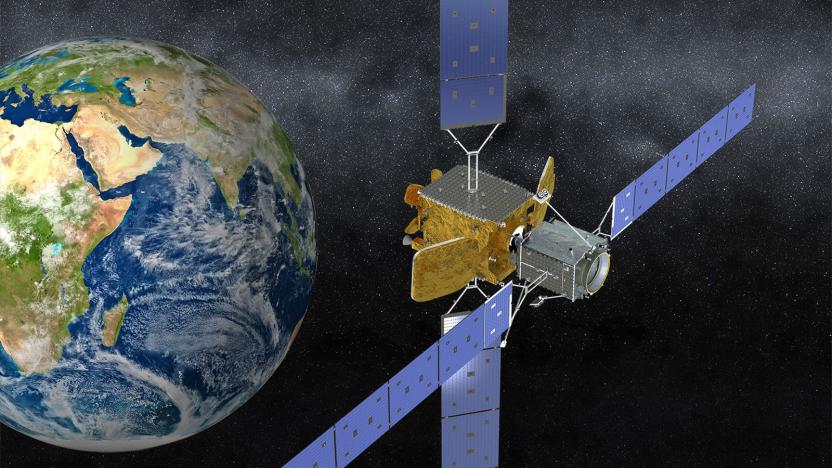mev
Latest

Northrop's satellite life extension spacecraft launches on October 9th (updated)
Space junk is hard to completely avoid when satellites can only last so long, but that might not be a problem for much longer. Northrop Grumman and NASA are launching a "first-of-its-kind" service vessel, the Mission Extension Vehicle, aboard a Russian rocket on October 9th. The inaugural MEV-1 will dock with an Intelsat satellite in three months' time and provide life-extending services over five years. After that, it should be free to help other satellites -- it'll still have 10 years' worth of use after that.

ICYMI: Space junk reboot, biological machine v2 and more
#fivemin-widget-blogsmith-image-763516{display:none;} .cke_show_borders #fivemin-widget-blogsmith-image-763516, #postcontentcontainer #fivemin-widget-blogsmith-image-763516{width:570px;display:block;} try{document.getElementById("fivemin-widget-blogsmith-image-763516").style.display="none";}catch(e){}Today on In Case You Missed It: NASA thinks it can extend the life of even dead satellites orbiting Earth with a new solution from the agency and Orbital ATK. Mission Extension Vehicles should go up in 2018 and give the sats battery power for as long as another 15 years. A game developer is trying to make older, classic Nintendo games 3D with an emulator that uses a custom algorithm to separate flat backgrounds into 3D objects. And the National Science Foundation funded work to create a biological machine that can be controlled with electrical or optical signals-- while using it's own muscle tissue for power. We also wanted to make sure you saw the ostrich chase video that is making the rounds. As always, please share any interesting science or tech videos, anytime! Just tweet us with the #ICYMI hashtag to @mskerryd.

ZMP RoboCar MEV seats only one but can drive even when alone (video)
Watch the video below and you'll see that this thing is clearly not going to win any land speed records, and with nary a door it's hardly all-weather compliant. But, the RoboCar MEV from ZMP is more of a research vehicle, a self-driving car that's built on an electric microcar platform. It uses GPS and a plethora of front and rear sensors to know where it's going, an evolution of the Linux-powered 1/10 scale model we saw back in 2009. Just, you know, bigger. And pricier. Way pricier. Yes, you can buy one, but you're looking at about $35,000 for the simplest version, the Type A, which only has automatic speed control. The Type B has steering control as well and costs about $59,000, while Type C is a whopping $84,000 and adds automatic braking control along with a full suite of imaging and intertial sensors. Order now for delivery in about two months -- in Japan, naturally.


